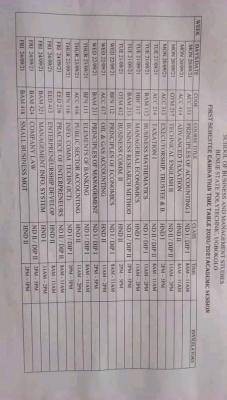
Indian banks' profitability, already at the lowest since 2009, is poised to decline further after measures to stem the rupee's record slump drove up borrowing costs and exacerbated rising bad loans and slowing loan growth.
Return on equity, which measures profit generated with shareholders' funds, may fall below 10 per cent in the year to March for banks from last year's 12.8 per cent, said Vibha Batra, co- head of financial-sector ratings in New Delhi at a unit of Moody's Investors Service. Bloomberg News reported on Monday that stressed assets are approaching levels last seen in 2002, she said on August 21.
India's banking index, which tracks lenders including State Bank of India, has lost 19 percent since July 15 following liquidity tightening measures from the central bank, which caused interbank rates to surge to a 17- month high last week.
Those steps may drive up the risk of defaults in an economy that expanded last year at the weakest pace in a decade. "With the rise in interest rates, the cash crunch and forex volatility, the evolving operating environment for banks in India is worrying," Batra said. "With the operating environment becoming tougher, stressed assets in the banking system are rising." Interbank funding costs jumped after the Reserve Bank of India raised two interest rates and capped cash injections into the banking system to stem the rupee's 19 per cent slide against the dollar since the end of April.
The rupee's slump is part of a sell-off in emerging-market assets as growth in the biggest developing nations slow and speculation increases the United States will start tapering its stimulus program. The MSCI Emerging Markets Index of stocks slumped 2.7 per cent last week, the most in two months, while a gauge of a currencies in Brazil, Russia, India, China and South Africa touched its lowest level versus the dollar since June 2010.
The rate at which Indian banks lend to each other for three months climbed to 11.2 per cent on August 23, the highest level since March 2012, compared with 8.52 per cent at the end of June, National Stock Exchange of India Ltd. data show.
The RBI's attempt to check the rupee's slide threatens to curtail lending that has already slowed in an economy that expanded five per cent in the year ended March 31. Loan growth at Indian lenders fell to 13.7 per cent in the 12 months to June 14, the lowest since December 2009, before rising to 16.6 per cent as of August 9, central bank data show.
"We reduced our exposure to Indian banks in recent months," David Gaud, a Hong Kong-based senior portfolio manager at the asset management unit of Edmond de Rothschild Group, which oversees more than $157bn, said by phone on August 21. "Nonperforming assets will rise and loan growth will be slower. There will be further pressure on return on equity."
